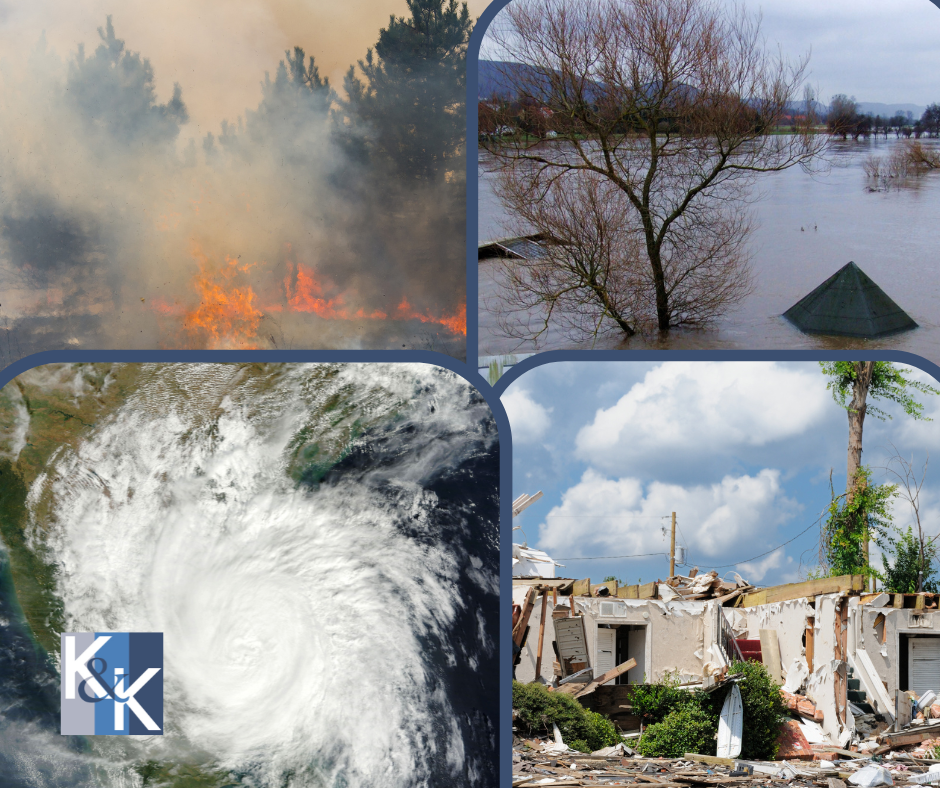
Your news feed is constantly cluttered with natural disasters – wildfires, hurricanes, and floods seem to have become part of our daily conversations. According to a recent study by the Institute for Economics and Peace, natural disasters on a global scale have increased ten times since the 1960s.
We often absorb this information with sorrow for those affected by the disaster, without stopping to think what we would do if our own home were affected. If you open mail for your homeowners’ insurer and stuff it in a drawer or throw it in the garbage, this brief post is intended to help give you some tools to be a more proactive homeowner in the event you do need to file an insurance claim.
In order to adequately protect yourself before any potential loss, you should be intimately familiar with your homeowner’s policy.
Upon receipt, you should set aside time to thoroughly review a complete copy of your homeowner’s policy.
Highlight sections that are concerning to you and contact your agent for answers. Ask yourself questions such as:
- What is the current value of your home?
- How much would it cost to rebuild it tomorrow?
- Is my ‘Other Structures’ limit adequate to rebuild my barn, “she shed,” or detached garage?
- Do I know the approximate value of the contents in my home?
- Do I have access to or retain proof of purchase for large ticket items such as furniture, electronics, and jewelry?
- Is that proof of purchase maintained electronically or would it be destroyed in a fire?
If you feel changes need to be made to your policy, including increases in your coverage limits, you should work with your agent immediately to do so. Don’t just ask your agent for the “best policy.” Ask specifically whether the coverage limits of your homeowner’s policy are adequate to rebuild the insured home in the event of a total loss.
Make note of any assurances from your agent that the agreed-upon coverage guarantees 100 percent replacement cost coverage. If you have doubts about whether you can rebuild with the amount of coverage you have, consider getting a current estimate done of the cost to rebuild your home with current construction prices.
After a catastrophic loss, many people struggle to pick up the pieces of their former lives. During this difficult time, it can add insult to injury to try to remember all the contents that were inside your home. Modern technology can be an incredibly useful tool in helping prepare you for a potential homeowner’s claim before you ever need to file one.
Simply take a video of each room of your home, noting major items and items of significance, when they were purchased, and from where. This will help with your ability to put together a contents list, should you ever need it.
The bottom line is this – the more organized and prepared you are to make a claim before a significant loss, the more likely it is that you have chosen a homeowners policy that will meet your needs if you should ever need to file a claim. Maintain a complete copy of your policy electronically. Review it yearly to ensure that the policy still suits your needs and adjust it as necessary.
Perform a virtual walkthrough of your home and property on a yearly basis and save it to the cloud and note significant changes you have made to your home over the past year. Reviewing and maintaining documentation and having intimate familiarity with your homeowner’s policy will help in alleviating stress and confusion should you ever need to file a homeowners insurance claim.
If you have questions about dealing with your insurance company regarding your homeowner’s policy, please call Kantor & Kantor for a free consultation or use our online contact form.

